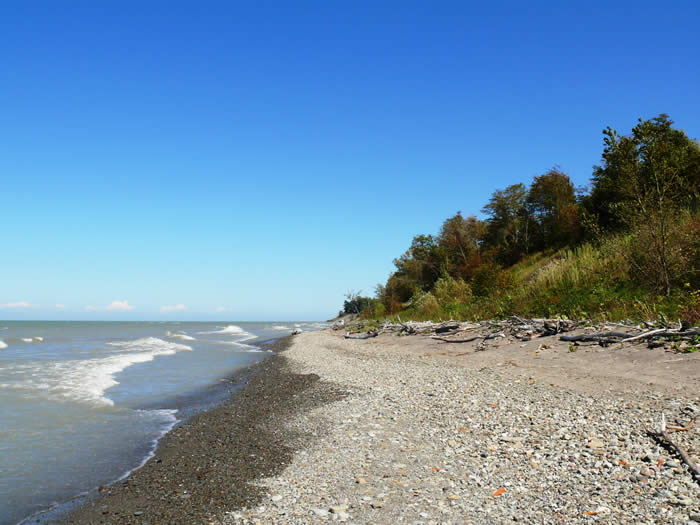
Land Conservancy preserved more than 4,000 acres in 2013
The Land Conservancy permanently preserved another 51 properties and more than 4,000 acres in 2013, marking one of the organization’s best years ever.
The preserved property total was only one short of the Land Conservancy’s high-water mark in 2011, while the 4,011 acres permanently protected in 2013 represented the organization’s fourth-best year behind 2012 (5,525 acres), 2011 (5,524) and 2007 (5,249). In addition, the Land Conservancy’s Thriving Communities Institute, which is helping revitalize urban centers throughout Ohio, assisted in the formation of new land banks in Ashtabula and Richland counties in 2013.
“In many ways, it has been a remarkable year for our organization and for the communities we serve,” said Rich Cochran, the Land Conservancy’s president and CEO. “We strive to create a cleaner and greener world that nourishes people, plants and animals, and our results in 2013 show we are making progress toward that goal. We are providing our communities with assets that, like the rising tide that lifts all vessels, give rise to enduring prosperity for all living things, including people. We could not do this without those who support our work, and we are grateful for that support.”
To date, the Land Conservancy has preserved 533 properties and 38,494 acres.
Here are some of the highlights of the Land Conservancy’s work in 2013:
Parks
- The Land Conservancy worked with Lake Metroparks to complete the acquisition of Lake Erie Bluffs, a nationally significant preserve with more than two miles of undeveloped shoreline in Lake County. This 600-acre park, which was opened to the public this fall, is home to 20 documented rare plant and wildlife species.
- In Medina Township, the Land Conservancy partnered with the Medina County Park District to acquire the 87-acre Medina Marsh property off Fenn Road. The parkland is the latest link in a two-mile, 600-acre corridor of conserved land in Medina Township and the city of Medina.
- In Cuyahoga County, the Land Conservancy helped Cleveland Metroparks acquire the 30-acre Sulphur Springs Headwaters property in Solon. The project protects more than a mile of headwater streams feeding the South Branch of Sulphur Creek, a coldwater tributary to the Chagrin River where native brook trout may one day be reintroduced.
- In Lorain County, the Land Conservancy permanently preserved an 88-acre property containing a heron rookery and a section of the East Branch of the Black River. The land, which is in Grafton and LaGrange townships, has become part of the Lorain County Metro Parks system.
- Near Kent, a rare sphagnum peat bog – a remnant of the last ice age – was preserved as the result of a project completed by the Land Conservancy and Portage Park District. The 58-acre Franklin Bog, located in Franklin Township, is adjacent to Akron’s 2,334-acre Lake Rockwell Reservoir, from which the city draws drinking water.
- The Land Conservancy’s work with Mill Creek Metroparks enabled the park district to acquire a 58-acre parcel in Mahoning County’s Green Township. It was the Land Conservancy’s largest project to date in Mahoning County.
Farms
- Property owners Bob and Deborah Bumb – fifth- and sixth-generation farmers, respectively – granted conservation easements to the Land Conservancy preserving 750 acres of farmland in Huron, Erie and Sandusky counties. The Bumbs granted a total of 11 conservation easements. The easements marked the first protected properties in Sandusky County for the Land Conservancy, and the properties contain some of the most fertile soils in Ohio.
- In eastern Erie County, John Nuhn preserved a total of 563 acres of predominantly rich agricultural land in an area his family has farmed for generations. Three conservation easements granted to the Land Conservancy preserved farmland in Florence and Vermilion townships. The property is currently used for grain production and is part of a larger grain operation across hundreds of additional acres.
- In Richland County, the Land Conservancy helped preserve a 154-acre grain farm and greenhouse operation. A conservation easement now protects the Daron family farm, which is northwest of Mansfield. It was the first farm in Richland County to be accepted into the Ohio Department of Agriculture’s Clean Ohio Agricultural Easement Purchase Program (AEPP).
- In Lorain County, Lawry Babbit preserved 211 acres of farmland in Rochester Township within the Black River watershed. The farm – part of a 1,700-acre operation that produces corn, wheat and soybeans to support a large black angus beef herd – is between three other properties on which the Land Conservancy holds conservation easements. This project was also made possible by funding from ODA’s Clean Ohio AEPP.
- Another 568 acres of farmland were protected in Huron County when Scott and Kathy Butts granted conservation easements to the Land Conservancy. The protected property, located in Hartland Township, is the base of operations for a 2,800 acre grain farm that includes land in Huron and Lorain counties. The property is primarily active agricultural land but also includes wooded areas containing forested wetlands and sits nearly on the divide between the Vermilion and Huron River watersheds.
Urban revitalization
- With the addition of new land banks in Ashtabula and Richland counties, there are now 17 such entities in Ohio. Thriving Communities Institute and its director, Jim Rokakis, who, as Cuyahoga County treasurer, crafted the state law enabling the creation of county land banks, have been the driving force behind this movement. County land banks can safely hold distressed properties until they can be put back into productive use.
- Thriving Communities and Rokakis worked with the United States Department of the Treasury to make $60 million in federal Hardest Hit funds available for demolition in Ohio. The Hardest Hit Fund was established in 2008 as a foreclosure prevention tool for 18 states identified as being hardest hit by the foreclosure crisis, but by 2013 very little of the allocated resources were spent. Using preliminary results of a research study commissioned by Thriving Communities Institute, Treasury Department officials agreed to make a portion of the funds available for demolition. Since 2012, Thriving Communities has helped bring $182 million in demolition money to Ohio.
- Thriving Communities Institute completed its first vacant property survey in Lorain, where residents supplied with electronic parcel data and mobile devices walked the streets to evaluate the city’s 28,000 parcels. A detailed report was then submitted to the city. In the wake of this project, Thriving Communities has received numerous requests to do surveys in other cities, including Akron, Cleveland, East Cleveland, Sandusky and Mansfield.
- In 2013, the Land Conservancy partnered with the village of Highland Hills, raising more than $400,000 in federal funding to acquire and protect a 10-acre wetland. This project presented a rare opportunity to preserve wetland habitat and upland forest buffers in central Cuyahoga County, one of Ohio’s most densely developed counties. Once the project is complete, the village will manage it as a nature preserve and provide public access for passive recreational use. It will also serve as an outdoor education laboratory for the Warrensville Heights School District.
- In Akron, the Land Conservancy completed the acquisition of a 16-acre parcel that will be added to the South Akron Greenway, a corridor of protected property along Adam’s and Haley’s runs. The original greenway project was a partnership with the Land Conservancy, Lockheed Martin Corp. and others.
- In 2013, Frank Ford, a nationally renowned vacant property researcher and chairman of the Vacant and Abandoned Property Action Council (VAPAC), joined the Thriving Communities staff as senior policy advisor. Ford has been featured in numerous local and national publications as an authority on vacancy, and recently completed a study for Harvard University.
From the countryside to the city, the Land Conservancy provides our region with natural places that nourish and support vibrant and prosperous communities by identifying, preserving, restoring and maintaining essential assets like clean water, working farms, wildlife areas, and parks. The Land Conservancy is based in Moreland Hills and has field offices in Cleveland, Akron, Medina, Oberlin, Orrville and Chardon.
